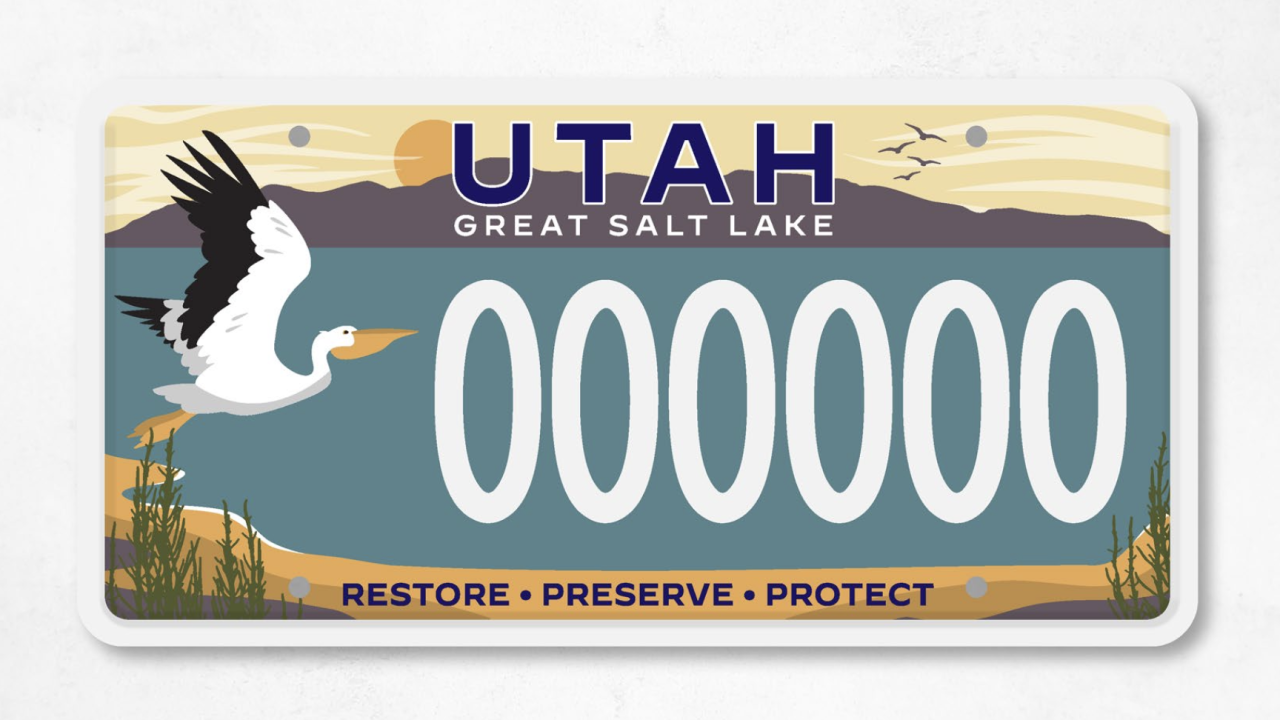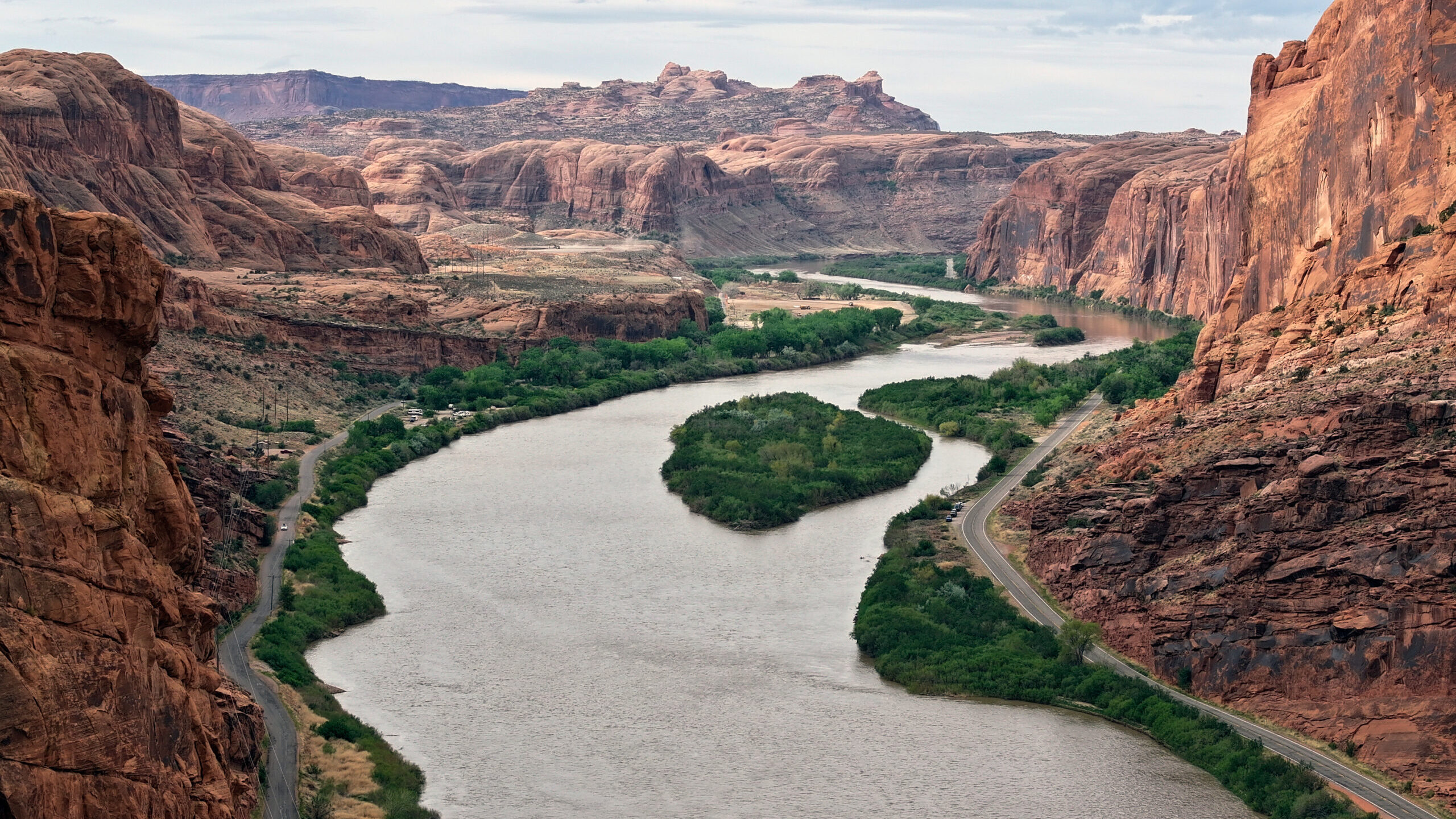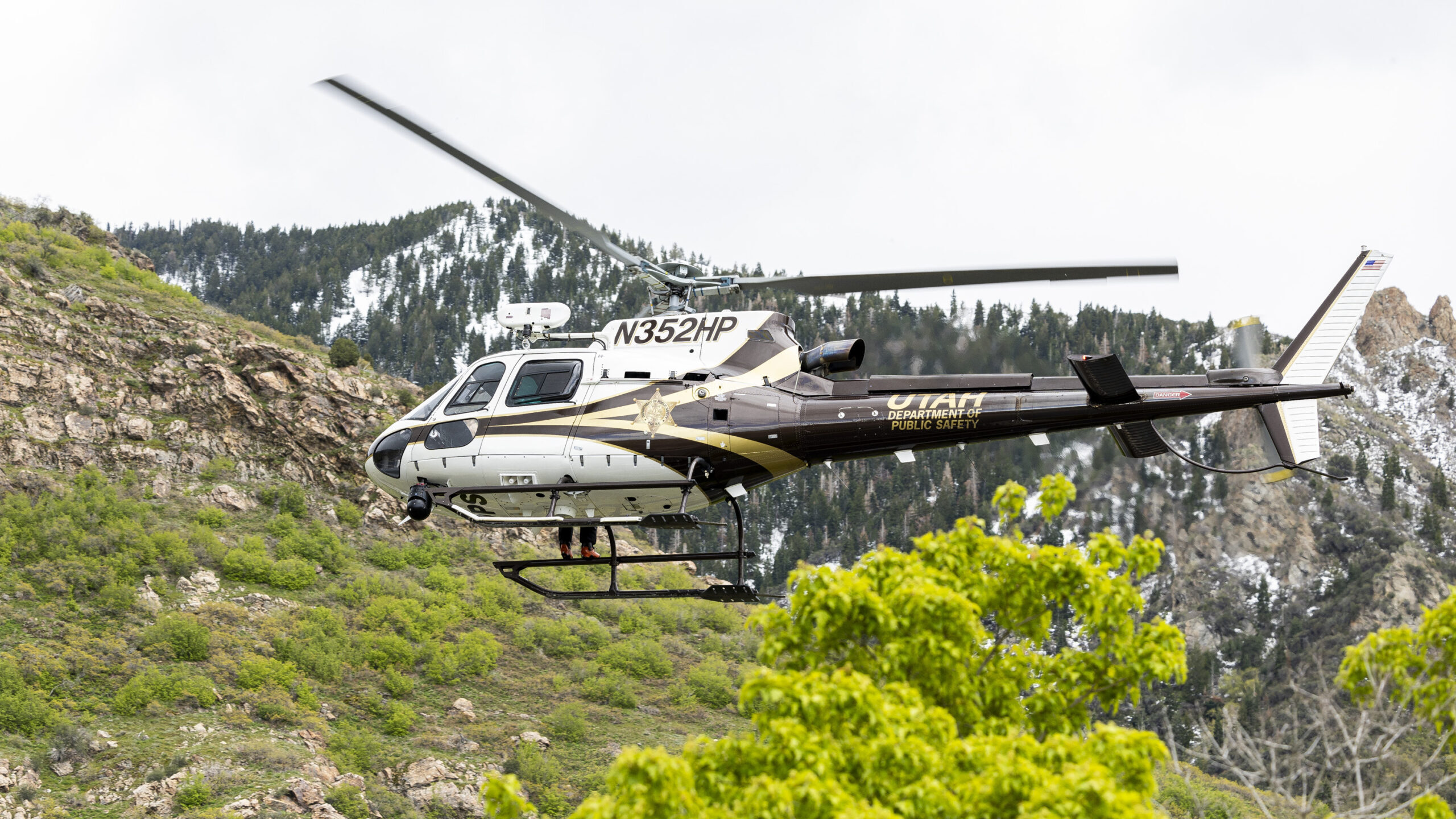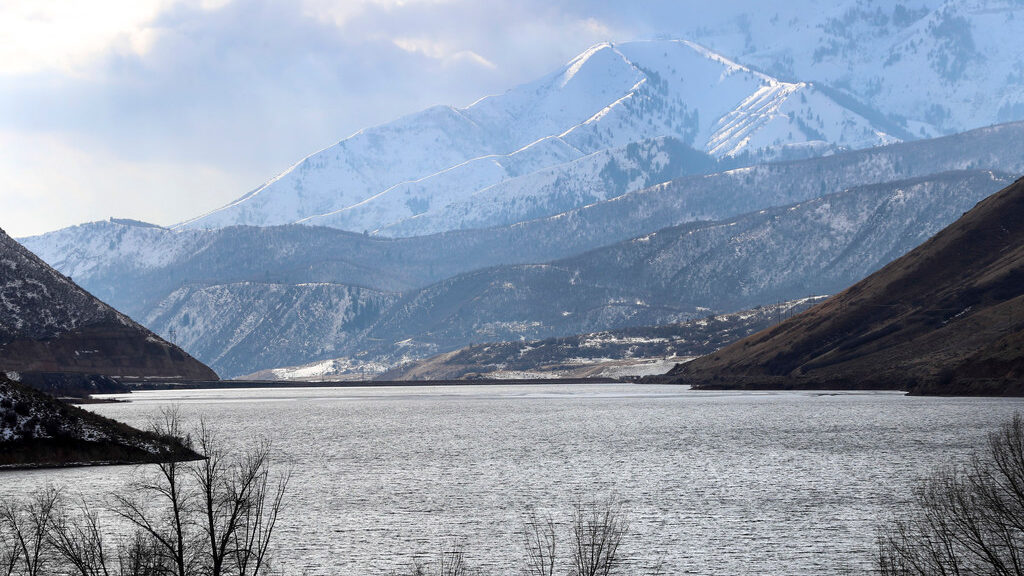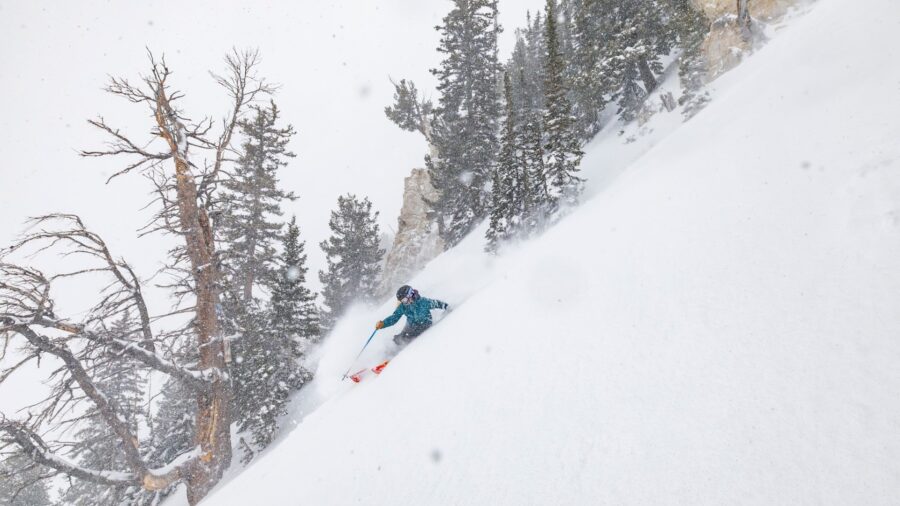Opponents say Little Cottonwood Canyon Gondola is overpriced solution
Jul 17, 2023, 12:00 PM | Updated: 12:40 pm
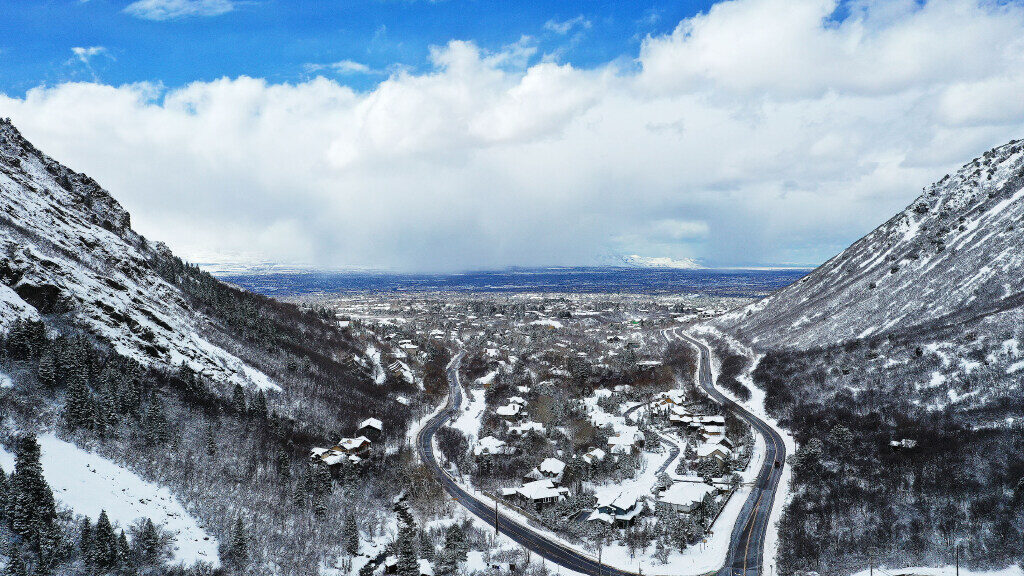
Opponents to the Little Cottonwood Canyon gondola say it will ruin canyon views. (Jeffrey D. Allred/Deseret News)
(Jeffrey D. Allred/Deseret News)
SALT LAKE CITY — The Utah Department of Transportation’s decision to choose Gondola Alternative B as the method to alleviate traffic in Little Cottonwood Canyon has been met with controversy. Opponents believe the Little Cottonwood Canyon gondola is an overpriced option that will only serve the Alta and Snowbird, the two ski resorts where the gondola will stop to let passengers out.
According to Save Our Canyons’ website, traffic will become a problem for the communities surrounding the gondola’s base station, as ski resort visitors try and secure parking. The group believes that non-ski resort visitors, such as backcountry skiers and snowshoers, will be left with no reliable alternative to park their vehicles when traveling up the canyon.
Mike Marker, a board member for Friends of Little Cottonwood Canyon, also questions whether the gondola option is the best one. The group’s website says their goal is to “protect the beauty (of the canyon.)”
“As a group of local residents who have long enjoyed the natural beauty of Little Cottonwood Canyon, (they) believe the canyon should be protected from expansive development and overuse for future generations.”
Marker said that the group is also opposed to the gondola because of the amount of money it will cost to build. “It’s so inconsistent with the conservative fiscal Utah values to spend that kind of money to benefit two private ski areas and a handful of land developers,” he said.
What is the cost of the gondola in Little Cottonwood Canyon?
Marker said the initial estimate that UDOT gave for the project was $592 million, but he believes the project will be closer to $1 billion. He said the Wasatch Front Regional Council, which handles the regional transportation plan, did its own research into the project. The council estimated the cost to be $1.4 billion.
“Somebody’s playing fast and loose with these numbers,” Marker said, “let’s be clear about that … (it’s) kind of like they’re saying ‘well it’s going to cost us X amount of money to buy a car, but they’re leaving out the price of the wheels, maybe the sound system, the air conditioning, and you’re just paying for the motor.'”
Marker said the project is fiscally irresponsible. He used other recent Utah projects, such as the new state prison and the inland port, as examples of projects costing more than their initial estimate.
Environmental impact
Another issue is water. Little Cottonwood Canyon is a watershed. Salt Lake County has relied on it for water for the last 150 years, and protecting it is important, said Marker.
According to Utah Physicians for a Healthy Environment, the blasting and digging associated with construction will likely contaminate the water that Salt Lake relies on. Friends of Little Cottonwood Canyon’s website says “with water becoming an increasingly vital and scarce resource, we need to be more diligent to safeguard the LCC watershed and protect our limited water supply.”
In addition to potential contamination that construction may add to the canyon’s water, Marker said there are concerns about development.
“Development brings people, people bring problems with watershed, and that’s the concern,” he said. He believes that having more people enter the canyon will cause more damage.
The Little Cottonwood Canyon ecosystem may also be negatively affected by the number of people the gondola could bring to the canyon. The Friends of Little Cottonwood Canyon believe that Utahns must decide upon the sustainable capacity of the canyon.
Better option
Marker and his organization believe there are better solutions, such as increased bus service, variable tolling, and enforced use of traction devices in slippery conditions.
“Now, people will say, ‘well, wait a minute. Nobody likes to ride the bus.’ Well, actually they do,” Marker said. “The problem is it’s so popular that it’s fairly crowded during the rush,” he said. On powder days, which are days right after a snowstorm when the snow is fresh, a lot of people are trying to get on the bus to get the first tracks down the mountain.
On these days, there’s a backlog and buses quickly reach capacity, leaving skiers stranded at the station.
Marker compared the gondola to the bus.
Each gondola cabin, according to Marker, holds 32 people and will take 27 minutes to reach the ski resorts in the canyon.
“You’re not going to get anything different in the gondola,” Marker said. There will still be crowds. He said people will still have to stand up, and cabins will still be crowded.
Better buses, electric buses, and more frequent service are the solutions that Marker and Friends of Little Cottonwood Canyon believe are a better option. He also suggested incentives for carpooling and tolling to enter the canyon. All of these alternatives use the preexisting infrastructure, causing less damage to the canyon’s ecology, Marker said, and preserving the beauty of the canyon.
Related reading:
- In narrow vote, Salt Lake County Council votes no on proposed gondola
- Utah lawmakers react to Little Cottonwood Canyon gondola announcement
- UDOT chooses gondola for Little Cottonwood Canyon

